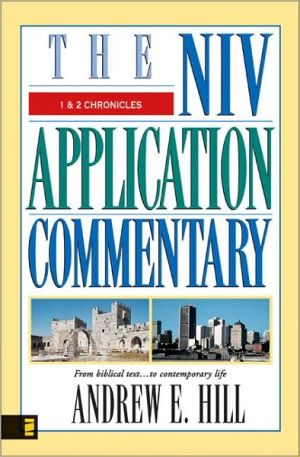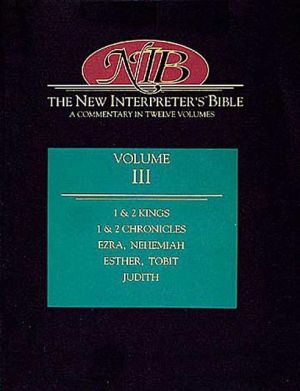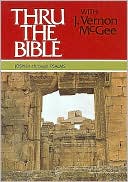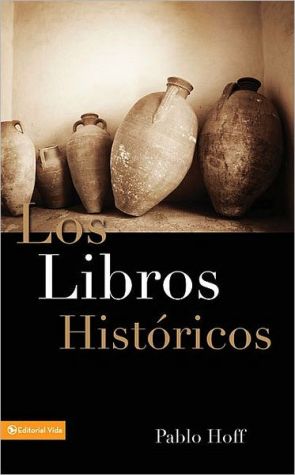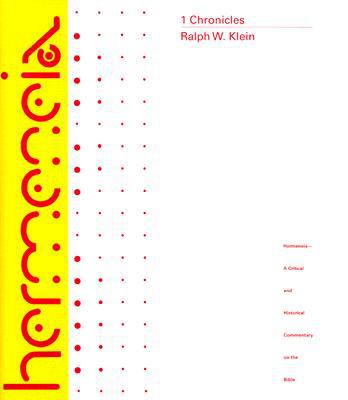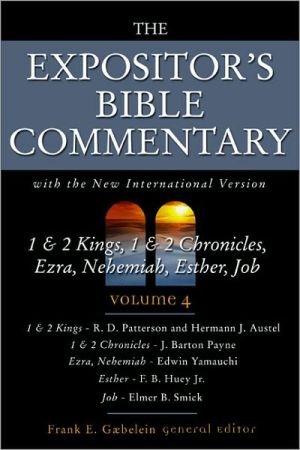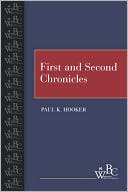1 & 2 Chronicles
The Chronicles are more than a history of ancient Israel under the ascent and rule of the Davidic dynasty. They are a story whose grand theme is hope. Great battles are fought, heroes and tyrants vie for power, Israel splits into rival kingdoms, and the soul of God's holy nation oscillates between faithlessness and revival. Yet above this tossing sea of human events, God's covenant promises reign untroubled and supreme. First and Second Chronicles are a narrative steeped in the best and worst...
Search in google:
The NIV Application commentary 1 and 2 Chronicles applies the books to today's culture by bringing the lenses of historical awareness, literary appreciation, and a biblical-theological perspective to bear on the Chronicler's sermons.
1 & 2 Chronicles\ \ By Andrew E. Hill \ Zondervan\ Copyright © 2003 Zondervan\ All right reserved.\ ISBN: 0310206103 \ \ \ \ \ \ \ Chapter One\ 1 Chronicles 1:1-2:2 \ Adam, Seth, Enosh, 2 Kenan, Mahalalel, Jared, 3 Enoch, Methuselah, Lamech, Noah.\ 4 The sons of Noah: Shem, Ham and Japheth. 5 The sons of Japheth: Gomer, Magog, Madai, Javan, Tubal, Meshech and Tiras. 6 The sons of Gomer: Ashkenaz, Riphath and Togarmah. 7 The sons of Javan: Elishah, Tarshish, the Kittim and the Rodanim. 8 The sons of Ham: Cush, Mizraim, Put and Canaan. 9 The sons of Cush: Seba, Havilah, Sabta, Raamah and Sabteca. The sons of Raamah: Sheba and Dedan. 10 Cush was the father of Nimrod, who grew to be a mighty warrior on earth. 11 Mizraim was the father of the Ludites, Anamites, Lehabites, Naphtuhites, 12 Pathrusites, Casluhites (from whom the Philistines came) and Caphtorites. 13 Canaan was the father of Sidon his firstborn, and of the Hittites, 14 Jebusites, Amorites, Girgashites, 15 Hivites, Arkites, Sinites, 16 Arvadites, Zemarites and Hamathites. 17 The sons of Shem: Elam, Asshur, Arphaxad, Lud and Aram. The sons of Aram: Uz, Hul, Gether and Meshech. 18 Arphaxad was the father of Shelah, and Shelah the father of Eber. 19 Two sons were born to Eber: One was named Peleg, because in his time the earth was divided; his brother was named Joktan. 20 Joktan was the father of Almodad, Sheleph, Hazarmaveth, Jerah, 21 Hadoram, Uzal, Diklah, 22 Obal, Abimael, Sheba, 23 Ophir, Havilah and Jobab. All these were sons of Joktan. 24 Shem, Arphaxad, Shelah, 25 Eber, Peleg, Reu, 26 Serug, Nahor, Terah 27 and Abram (that is, Abraham). 28 The sons of Abraham: Isaac and Ishmael. 29 These were their descendants: Nebaioth the firstborn of Ishmael, Kedar, Adbeel, Mibsam, 30 Mishma, Dumah, Massa, Hadad, Tema, 31 Jetur, Naphish and Kedemah. These were the sons of Ishmael. 32 The sons born to Keturah, Abraham's concubine: Zimran, Jokshan, Medan, Midian, Ishbak and Shuah. The sons of Jokshan: Sheba and Dedan. 33 The sons of Midian: Ephah, Epher, Hanoch, Abida and Eldaah. All these were descendants of Keturah. 34 Abraham was the father of Isaac. The sons of Isaac: Esau and Israel. 35 The sons of Esau: Eliphaz, Reuel, Jeush, Jalam and Korah. 36 The sons of Eliphaz: Teman, Omar, Zepho, Gatam and Kenaz; by Timna: Amalek. 37 The sons of Reuel: Nahath, Zerah, Shammah and Mizzah. 38 The sons of Seir: Lotan, Shobal, Zibeon, Anah, Dishon, Ezer and Dishan. 39 The sons of Lotan: Hori and Homam. Timna was Lotan's sister. 40 The sons of Shobal: Alvan, Manahath, Ebal, Shepho and Onam. The sons of Zibeon: Aiah and Anah. 41 The son of Anah: Dishon. The sons of Dishon: Hemdan, Eshban, Ithran and Keran. 42 The sons of Ezer: Bilhan, Zaavan and Akan. The sons of Dishan: Uz and Aran. 43 These were the kings who reigned in Edom before any Israelite king reigned: Bela son of Beor, whose city was named Dinhabah. 44 When Bela died, Jobab son of Zerah from Bozrah succeeded him as king. 45 When Jobab died, Husham from the land of the Temanites succeeded him as king. 46 When Husham died, Hadad son of Bedad, who defeated Midian in the country of Moab, succeeded him as king. His city was named Avith. 47 When Hadad died, Samlah from Masrekah succeeded him as king. 48 When Samlah died, Shaul from Rehoboth on the river succeeded him as king. 49 When Shaul died, Baal-Hanan son of Acbor succeeded him as king. 50 When Baal-Hanan died, Hadad succeeded him as king. His city was named Pau, and his wife's name was Mehetabel daughter of Matred, the daughter of Me-Zahab. 51 Hadad also died.\ The chiefs of Edom were: Timna, Alvah, Jetheth, 52 Oholibamah, Elah, Pinon, 53 Kenaz, Teman, Mibzar, 54 Magdiel and Iram. These were the chiefs of Edom.\ 2:1 These were the sons of Israel: Reuben, Simeon, Levi, Judah, Issachar, Zebulun, 2 Dan, Joseph, Benjamin, Naphtali, Gad and Asher.\ Biblical scholars have long noted that the genealogies of the prologue to Chronicles (1 Chron. 1-9) are a mini-commentary of sorts on the book of Genesis. This understanding is largely based on the phrase "these are the generations of," which provides a structural framework for the narratives of Genesis (e.g., Gen. 5:1; 10:1 RSV). In most cases, the Chronicler borrows from earlier genealogical sources and pares the listings to a register of names only (e.g., Gen. 5:1-32; cf. 1 Chron. 1:1-4). God is everywhere assumed but nowhere mentioned in genealogies. The Chronicler also takes it for granted that his audience knows well the stories and personalities associated with the names logged in the genealogies. This fact is important to understanding the rest of the Chronicles as well. The highly selective retelling of Israel's history presupposes the Chronicler's audience knows their Hebrew Bible.\ Selman has noted that the pivot points of the introductory genealogy are names of great significance in the early history of God's people, including Adam (1:1), Noah (1:4), Abraham (1:27, 28, 32, 34), and Israel (or Jacob, 1:34; 2:1). Further, he has observed that each section of the genealogy is arranged in such a way that the person providing the link from Adam to Israel is mentioned last in each generation. This means that the sequence of names does not always correspond with birth order as presented in the Genesis narratives.\ More important are the theological threads unifying this opening genealogy. (1) The nations are introduced in such a way that all peoples are placed inside rather than outside the purposes of God's electing love. (2) The nation of Israel lies at the center of the genealogical scheme. Thus, the Israel of the Chronicler's day is united with the earlier Israel and with the nations.\ The genealogical prologue found in 1 Chronicles 1-9 contains the most extensive and complex genealogies of the Bible. According to Robert Wilson, "a genealogy is a written or oral expression of the descent of a person or persons from an ancestor or ancestors." Particular terminology is sometimes used to characterize the composition of biblical genealogies, such as:\ • breadth, a listing of a single generation of descendants from a common ancestor (e.g., 2:1)\ • depth, a listing of successive generations, commonly four to six (e.g., 3:10-16)\ • linear, displaying depth alone (e.g., 2:10)\ • segmented, displaying both breadth and depth (e.g., 3:17-24)\ • descending, or proceeding from parent to child (e.g., 9:39-44)\ • ascending, or moving from child to parent (e.g., 9:14-16)\ The basic purpose of the genealogy is to identify kinship relationships between individuals, families, and people groups. Marshall Johnson has isolated nine distinct functions that genealogies serve in the Old Testament:\ • demonstrate existing relationships between Israel and neighboring tribes by establishing common ancestors (e.g., the relationship of Lot's descendants to Israel, Gen. 19:36-38)\ • connecting isolated traditions of Israelite origins into a coherent literary unit by means of an inclusive genealogical system (e.g., the tole-dot formulas in Genesis [5:1; 10:1; etc.])\ • bridge chronological gaps in the biblical narratives (e.g., Ruth 4:18-22)\ • serve as chronological controls for the dating of key Old Testament events (e.g., the date of the book of Esther in relationship to the Babylonian exile, Est. 2:5-6-although the selective nature of biblical genealogies may compromise the accuracy of the genealogy as a chronological device)\ • perform a specific political and/or military function, as in the taking of a census (e.g., Num. 1:3-46)\ • legitimize an individual or family in an office or enhance the stature of an individual by linkage to an important clan or individual of the past (e.g., Zeph. 1:1)\ • establish and preserve the ethnic purity of the Hebrew community, as in the case of the records found in Ezra and Nehemiah (e.g., Ezra 7)\ • assert the importance of the continuity of God's people through a period of national calamity (prominent in Chronicles, e.g., the line of David in 1 Chron. 3:17-24)\ • express order, structure, and movement in history according to a divinely prearranged plan (e.g., identifying Haman, the son of Hammedatha, as an Agagite, Est. 3:1, 10).\ It is evident the genealogies of 1 Chronicles 1-9 serve multiple purposes, especially in legitimizing the authority of Levitical priesthood as the rightful successors to the royal authority of Davidic kingship and in asserting the continuity of the Hebrew people through the national distress of the Babylonian exile. There is even a sense in which the juxtaposition of certain genealogies (e.g., that of Esau and Israel or Saul and David) works to express movement in history according to God's redemptive plan.\ A child was named immediately upon birth during Old Testament times, and the name was usually chosen by the mother (e.g., Gen. 35:18; 1 Sam. 1:20). The ancients understood the name to signify the essence of a thing or a person. The naming process involved knowledge of the thing or person named and power over that entity once the name was ascribed (e.g., Pharaoh's naming Joseph as Zaphenath-Paneah, Gen. 41:45).\ Since the name denoted essential being, a child's name was chosen with great care. A person's name revealed the character and personality as well as the reputation, authority, vocation, and even the destiny of the bearer. At times unusual circumstances surrounding the birth inspired a child's name (e.g., Isaac, Gen. 21:6-7; Samuel, 1 Sam. 1:20). On occasion the shifting fortunes in a person's life situation or the transformation of a person's character prompted a name change (e.g., Jacob becomes Israel, Gen. 32:28; Naomi becomes Mara, Ruth 1:20).\ Many Old Testament names are theophoric; that is, they contain some element of a divine name or title indicating one's religious loyalty (e.g., Josiah [= "Yahweh will give"], 1 Chron. 3:14; Elkanah [= "God has created"], 1 Chron. 6:23; Merib-Baal ["the Lord/Baal contends"], 1 Chron. 8:34). All this is a part of the worldview of the Chronicler's audience. The genealogy is not simply a catalog of the names of dead ancestors. Rather, it represents a rich history of family, clan, and nation told and retold through the life and story represented by the personal names of individuals who form an integral part of the larger story of the Israelite community.\ The Chronicler's panoramic sweep of ancient history from Adam to Noah to Abraham and Israel transports the audience into the accounts of the book of Genesis. There the emphasis was on God's dealings with humanity both in terms of creation and redemption. The same is true for the Chronicler, especially as he traces the names of key players in the unfolding drama of God's redemptive plan for humanity. The stories behind the names in the genealogies may hint at themes and ideas important to the Chronicler. For example, Enoch "walked" with God (1 Chron. 1:3; cf. Gen. 5:24), a repeated phrase in the Chronicler's evaluation of the kings of Judah (e.g., 2 Chron. 17:3; 21:12; etc.). Perhaps Nimrod the "mighty warrior" (1 Chron. 1:10; cf. Gen. 10:8-9) inspires the descriptions of the mighty warriors of David's day (e.g., 1 Chron. 12:8, 21, 28, etc.).\ (Continues...)\ \ \ \ \ \ \ \ Excerpted from 1 & 2 Chronicles by Andrew E. Hill Copyright © 2003 by Zondervan\ Excerpted by permission. All rights reserved. No part of this excerpt may be reproduced or reprinted without permission in writing from the publisher. \ \
http://zondervan.com/media/samples/pdf/0310206103_samptoc.pdf
